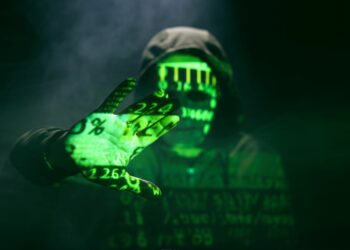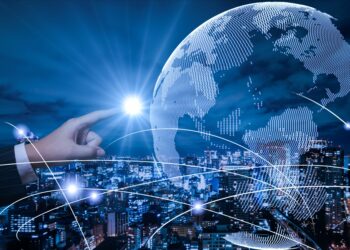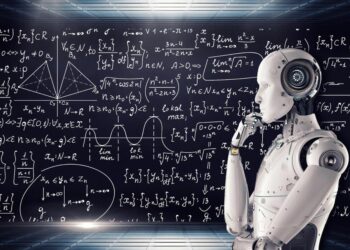Artificial intelligence and blockchain are together transforming the technological landscape. Their synergy is based on a mutual relationship: AI makes blockchain more efficient, while blockchain enhances the security and transparency of the data used by AI.
However, this alliance raises major issues. It raises questions about security, governance and the balance between centralisation and decentralisation.
This article explores in detail this interaction, its benefits, its limits and its consequences for the global economy.
The two-way relationship between AI and blockchain
Artificial intelligence and blockchain form a dynamic and complementary duo. Each enhances the capabilities of the other, creating a synergy rich in applications. Their interaction is based on four key principles:
- AI at the service of blockchain: Thanks to its computing power, AI optimises the execution of smart contracts. It also improves oracles, which enable the blockchain to connect to external data.
- Blockchain as a guarantee of reliability for AI: It guarantees the integrity and traceability of the data used to train and validate AI models.
- Blockchain to secure AI: Its cryptographic mechanisms reduce the risks of manipulation and ensure better control of AI systems.
- More decentralised AI thanks to blockchain: blockchain makes it possible to create autonomous AI networks, without depending on large centralised platforms.
These four areas will be explored in detail in the following sections.
1. AI as a calculation tool for blockchain
Artificial intelligence provides blockchain with unprecedented computing and analysis power. It strengthens two key elements of blockchain operation:
- Optimisation of smart contracts: Using AI, these autonomous programmes can manage complex tasks such as analysing financial data or tracking supply chains in real time. For example, an AI-powered smart contract could automatically adjust the terms of a loan according to market fluctuations.
- Amélioration des oracles : Les oracles servent de passerelles entre la blockchain et le monde extérieur. L’IA améliore leur performance en leur permettant de traiter, filtrer et contextualiser les données. Résultat : les contrats intelligents peuvent réagir avec plus de précision aux événements réels.
2. Blockchain as a source of truth for AI
One of the major challenges of AI is the reliability of the data it uses.
Generative models, such as ChatGPT, can produce ‘hallucinations’: false or invented information. Blockchain can help to limit this problem.
Thanks to its immutable nature (the data recorded cannot be modified) and verifiability (it can be traced back to its origin), it guarantees a more reliable database for AI.
The verifiable Web
The blockchain makes it possible to build a verifiable Web.
Every piece of information is stored immutably and can be traced back to its source. Here are a few concrete examples:
- Data authenticity : A time-stamped image or document on the blockchain proves its creation date and integrity.
- Traceability of decisions: The actions of an AI can be recorded on the blockchain. In this way, their origin and validity can be verified.
However, this approach has its limits.
The blockchain guarantees the integrity of data once it has been recorded, but not its initial veracity. So it cannot, on its own, eliminate misinformation.
3. Blockchain to secure and control AI
AI, although powerful, poses risks in terms of security and control. Thanks to its deterministic security mechanisms and cryptography, blockchain can play a key role in limiting these risks.
Data Security
- Confidentiality: The blockchain enables AI models to be run without revealing the underlying data, thereby guaranteeing the protection of privacy.
- Integrity: The data used by the AI can be stored on the blockchain, ensuring that it has not been altered.
Stock control
- Smart contracts: Smart contracts can be used to define strict rules about what AI is allowed to do, preventing malicious or unpredictable actions.
- Traceability: Decisions taken by the AI can be recorded on the blockchain, making it possible to verify their origin and validity.
However, this approach is not foolproof. Smart contracts themselves can contain vulnerabilities, as the DAO attack in 2016 showed. What’s more, a misconfigured AI could exploit these vulnerabilities on a large scale, posing systemic risks.
4. The decentralisation of AI thanks to blockchain
One of the most promising aspects of blockchain-IA convergence is the concept of decentralised AI. Today, AI is mainly centralised, controlled by a few technological giants such as OpenAI or Google. These models require huge computing resources and massive data, which limits their accessibility and transparency.
Blockchain offers an alternative: decentralised AI networks where models are trained and executed in a distributed manner. Here are a few emblematic projects that illustrate this trend:
Decentralised artificial super-intelligence
An ambitious project aims to create a decentralised artificial superintelligence. Unlike centralised AI models, this project relies on a blockchain network to guarantee transparency, security and collective governance. The aim is to enable independent players to contribute to the development and training of AI, while avoiding the concentration of power in the hands of a few companies.
Decentralised market for AI
Another project allows participants from all over the world to contribute to the training of AI models in exchange for tokens. The project uses a blockchain to reward contributors based on the quality of the data and calculations provided. The project aims to create a decentralised market for AI, where models are trained collaboratively and transparently.
Scalable platform for AI
Another initiative is a blockchain designed to be scalable and easy to use, making it an ideal platform for hosting decentralised AI applications. This platform allows developers to create smart contracts capable of interacting with AI models. For example, an application on this platform could use AI to analyse data in real time and execute automatic transactions based on the results.
Advantages of decentralised AI
- Transparency: Data and models are verifiable, reducing the risk of bias or manipulation.
- Resilience: Decentralised networks are less vulnerable to breakdowns or attacks.
- Accessibility: The costs of training and running AI models could be reduced by pooling resources.
Challenges of decentralised AI
- Performance: Decentralised models may perform less well than their centralised counterparts due to latency and computational limitations.
- Governance: The management of decentralised networks raises complex issues, particularly with regard to the distribution of rewards and decision-making.
- Regulation: The authorities could take a dim view of AI systems that escape their control.
5. Impact on industrial sectors
The blockchain-IA convergence has major implications in various sectors.
- Finance: Smart contracts could automate lending, insurance and investments. For example, a smart contract could use AI to assess a borrower’s creditworthiness in real time.
- Healthcare: Blockchain secures medical data used by AI for personalised diagnostics. For example, an AI model could analyse medical data stored on a blockchain to recommend personalised treatments.
- Supply Chain: AI optimises logistics, while blockchain ensures product traceability. For example, a company could use AI to predict delivery times and blockchain to verify the origin of products.
6. Ethical and social issues
- Algorithmic biases: AI models can reproduce biases present in training data. Blockchain could help audit these biases by providing data traceability. For example, an AI model used for recruitment could be audited for gender or ethnic bias.
- Accountability: Who is accountable for the decisions made by an autonomous AI? Smart contracts could include clear accountability mechanisms, recording each decision and attributing it to a human manager.
- Regulation: Authorities could take a dim view of AI systems beyond their control.
7. Interoperability and environmental impact
Blockchains and AI models need to be interoperable to maximise their potential. Projects are working on solutions to connect different blockchains. For example, an AI model trained on one blockchain could be used on another blockchain via a cross-chain bridge.
Finally, the environmental impact of this convergence should not be overlooked. Training AI models and mining cryptocurrencies requires a lot of energy. Solutions such as proof-of-stake blockchains (a transaction validation mechanism that uses less energy than proof-of-work) and more efficient AI models could reduce this impact.
A powerful but double-edged alliance
The convergence of blockchain and AI opens up immense prospects, but it is not without risks. On the one hand, it enables innovative applications such as smart contracts and advanced prediction systems. On the other, it poses major challenges in terms of security, confidentiality and control.
The fundamental question is who will control tomorrow’s artificial intelligence: a handful of technological giants or a collaborative, decentralised approach? History has shown us that open-source often ends up triumphing over closed systems. However, this convergence will require balanced regulation and increased vigilance to avoid abuses. The race is on, and the future of this promising alliance will depend on our ability to balance innovation and responsibility.
AI and blockchain are mutually reinforcing. AI provides large-scale analysis and processing capabilities, while blockchain guarantees data integrity, transparency and traceability. Together, they create more secure, efficient and decentralised systems.
Blockchain cannot correct bias or verify the veracity of information at source. It can, however, ensure that the data used has not been altered and can be traced back to its origin, which improves the overall reliability of AI models.
Yes, blockchain enables the creation of decentralised AI networks, where data, models and decisions are shared transparently between multiple players. This reduces dependence on large centralised platforms, while increasing the resilience and accessibility of systems.












